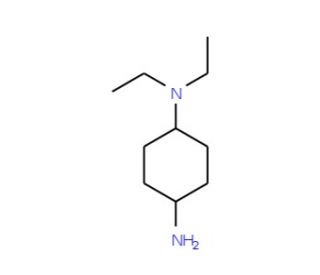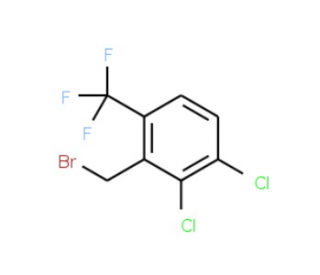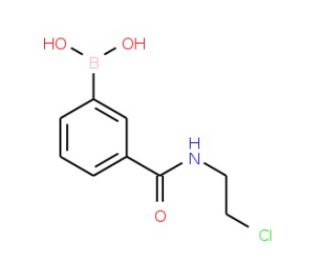详细说明
Species Reactivity
Human
Specificity
Detects human Siglec‑3/CD33 in direct ELISAs and Western blots. In direct ELISAs and Western blots, no cross-reactivity with recombinant human Siglec-2, -5, -7, or -9 is observed.
Source
Monoclonal Mouse IgG 1 Clone # 6C5/2
Purification
Protein A or G purified from hybridoma culture supernatant
Immunogen
Recombinant human Siglec‑3/CD33
Extracellular domainFormulation
Supplied in a saline solution containing BSA and Sodium Azide.
Label
Phycoerythrin
Applications
Recommended
ConcentrationSample
Flow Cytometry
10 µL/10 6 cells
See below
Please Note: Optimal dilutions should be determined by each laboratory for each application. are available in the Technical Information section on our website.
Data Examples
Flow Cytometry | Detection of Siglec‑3/CD33 in Human Blood Granulocytes by Flow Cytometry. Human peripheral blood granulocytes were stained with Mouse Anti-Human Siglec‑3/CD33 PE‑conjugated Monoclonal Antibody (Catalog # FAB1137P, filled histogram) or isotype control antibody (Catalog # , open histogram). View our protocol for . |
Preparation and Storage
Shipping
The product is shipped with polar packs. Upon receipt, store it immediately at the temperature recommended below.
Stability & Storage
Protect from light. Do not freeze.
12 months from date of receipt, 2 to 8 °C as supplied.
Background: Siglec-3/CD33
Siglecs (sialic acid binding Ig-like lectins) are I-type (Ig-type) lectins belonging to the Ig superfamily. They are characterized by an N‑terminal Ig-like V-type domain which mediates sialic acid binding, followed by varying numbers of Ig-like C2-type domains (1, 2). Eleven human Siglecs have been cloned and characterized. They are sialoadhesin/CD169/Siglec-1, CD22/Siglec-2, CD33/Siglec-3, Myelin-Associated Glycoprotein (MAG/Siglec-4a) and Siglecs 5 to 11 (1‑3). To date, no Siglec has been shown to recognized any cell surface ligand other than sialic acids, suggesting that interactions with glycans containing this carbohydrate are important in mediating the biological functions of Siglecs. Siglecs 5 to 11 share a high degree of sequence similarity with CD33/Siglec-3 both in their extracellular and intracellular regions. They are collectively referred to as CD33-related Siglecs. One remarkable feature of the CD33-related Siglecs is their differential expression pattern within the hematopoietic system (1, 2). This fact, together with the presence of two conserved immunoreceptor tyrosine-based inhibition motifs (ITIMs) in their cytoplasma tails, suggests that CD33-related Siglecs are involved in the regulation of cellular activation within the immune system.
Human Siglec-3 is alternatively known as myeloid cell surface antigen CD33 and GP67. Human Siglec-3 cDNA encodes a 364 amino acid (aa) polypeptide with a hydrophobic signal peptide, an N-terminal Ig-like V-type domain, one Ig-like C2-type domains, a transmembrane region and a cytoplasmic tail (1, 4). Siglec-3 expression is restricted to cells of myelomonocytic lineage (2). It binds sialic acid preferring alpha 2,3- linkage over alpha 2,6- linkage (5). Studies indicated that Siglec-3 recruits SHP-1 and SHP-2 to its ITIMs (6, 7). When co-crosslinking with Fc gamma R1, Siglec-3 inhibits tyrosine phosphorylation and calcium mobilization, suggesting Siglec-3 can mediate inhibitory signals (7).
References:
Crocker, P.R. and A. Varki (2001) Trends Immunol. 22:337.
Crocker, P.R. and A. Varki (2001) Immunology 103:137.
Angata, T. et al. (2002) J. Biol. Chem. 277:24466.
Simmons, D. and B. Seed (1988) J. Immunol. 141:2797.
Freeman, S.D. et al. (1995) Blood 85:2002.
Taylor, V.C. et al. (1999) J. Biol. Chem. 274:11505.
Ulyanova, T. et al. (1999) Eur. J. Immunol. 29:3440.
Long Name:
Sialic Acid Binding Ig-like Lectin 3
Entrez Gene IDs:
945 (Human); 12489 (Mouse)
Alternate Names:
CD33 antigen (gp67); CD33 antigen; CD33 molecule; CD33; FLJ00391; gp67; myeloid cell surface antigen CD33; p67; sialic acid binding Ig-like lectin 3; Sialic acid-binding Ig-like lectin 3; Siglec3; Siglec-3; SIGLEC3gp67










 粤公网安备44196802000105号
粤公网安备44196802000105号